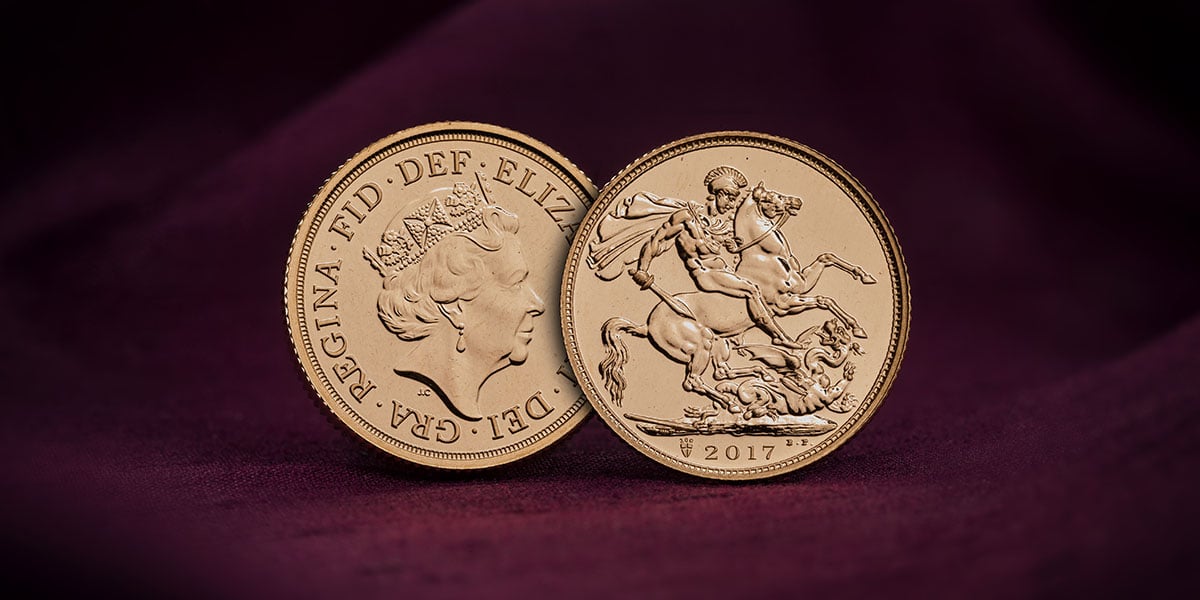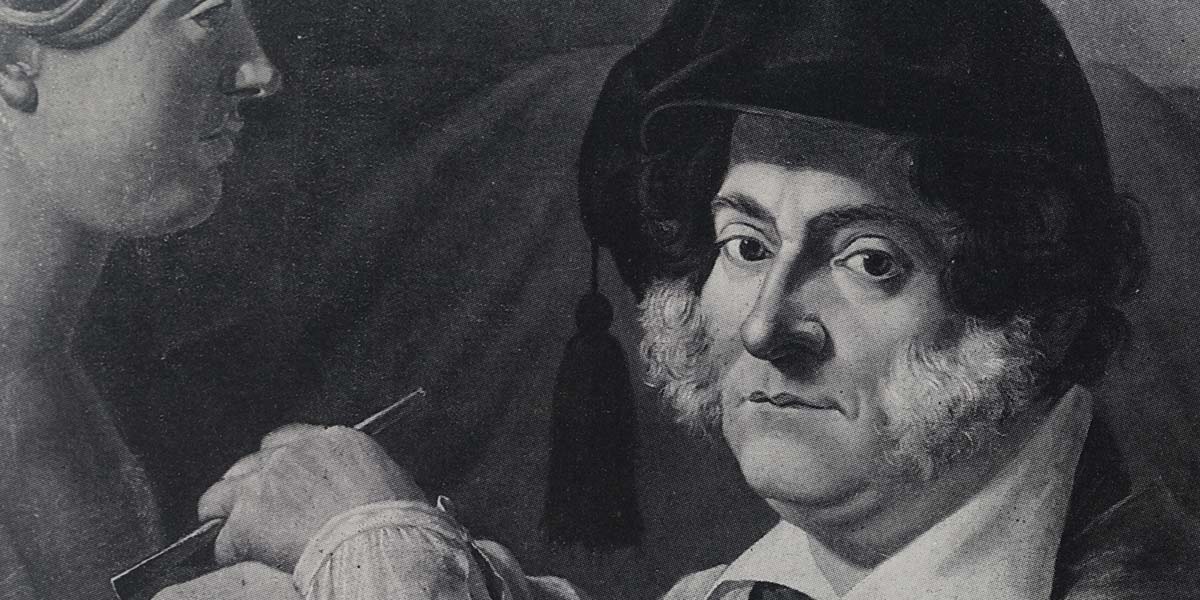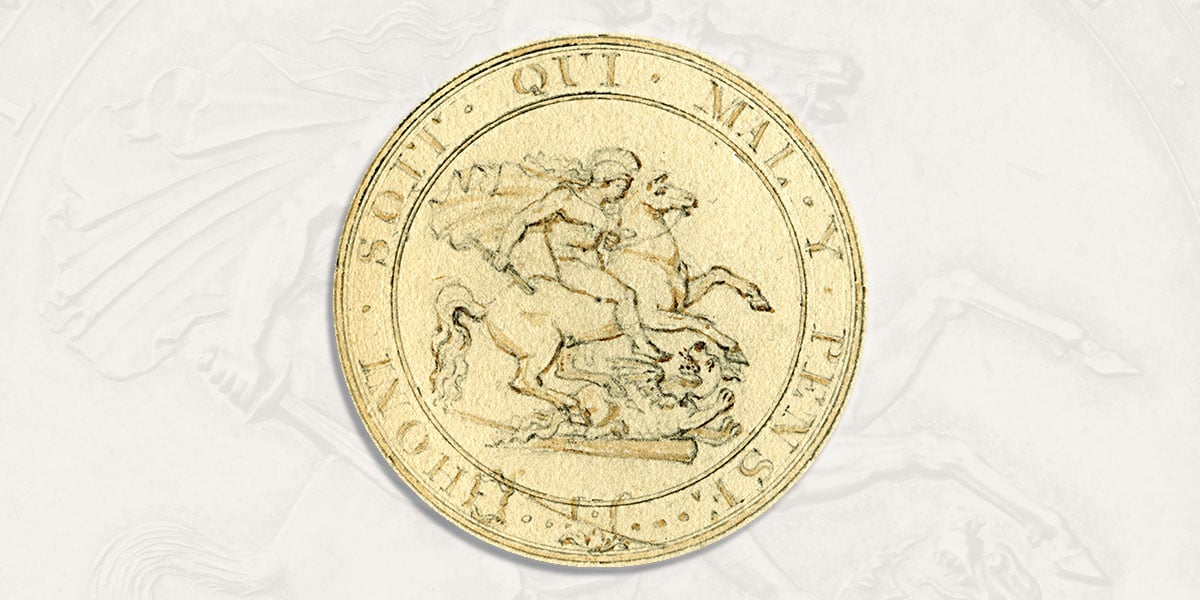Marking 200 years of the modern Sovereign, this 2017 edition of the coin features a special privy mark on its reverse. The design replicates Pistrucci’s original 1817 creation in which St George is shown wearing a plumed a helmet and brandishing a broken lance.
Struck in 2017 to commemorate the 200th anniversary of the modern Sovereign, the 2017 Elizabeth II Sovereign features Benedetto Pistrucci’s classic St George and the dragon on its reverse. In tribute to the milestone anniversary, the reverse also features a unique privy mark.
Here, we delve into the history and background of Pistrucci’s design, which has become synonymous with the ‘chief coin of the world’.

The Re-Introduction of a Regal Coin
The conclusion of the Napoleonic wars triggered the great coinage reform of 1816, which was orchestrated by William Wellesley Pole, then Master of the Mint. The reform saw the guinea phased out for a new coin with a denomination of 20 shillings.
The new coin was named after the sovereign, which was originally introduced to British coinage in 1489 at the behest of Henry VII, when the Tudor monarch demanded ‘a new money of gold’.
Brother to the Duke of Wellington, Pole played a crucial role in appointing the Italian gem engraver Benedetto Pistrucci, the man responsible for the 1817 Sovereign design now regarded as one of the most iconic in numismatic history, to The Royal Mint’s engraving staff.

The Talented Italian
Pistrucci decided to leave his native Rome and move to England following a recommendation to pursue work in London. He arrived in the summer of 1815 and was soon in the patronage of many wealthy benefactors, one of whom was Sir Joseph Banks of The Royal Society.
Through Banks, Pistrucci was introduced to Pole; he was a great admirer of Pistrucci’s work, and when a proposal emerged from the Duke of Wellington for a medal for the Allied leaders commemorating the Battle of Waterloo, Pistrucci was invited to produce designs for the medallion.
His models were submitted to the Prince Regent for approval and, in August 1819, the Treasury gave formal authority for Pistrucci to proceed with the preparation of dies from the approved models.
Contribution to Coinage
In addition to the Waterloo Medal, Pistrucci was commissioned to produce portrait models of George III for the new gold and silver coins planned for issue in 1817.
The Royal Mint’s in-house engravers translated Pistrucci’s models directly onto steel, but the Italian found the result unsatisfactory. Instead, he took it upon himself to master the technique of steel engraving, which resulted in the unique, original St George and the dragon design that appeared on the new Sovereigns of 1817.

St George and the Dragon
According to Pistrucci, it was his idea to have St George and the dragon as the design of the new Sovereign. He had been asked by Lady Spencer, to whom he had been introduced by Sir Joseph Banks, on her husband’s behalf to produce a wax model of St George in the Grecian style.
Pistrucci claimed that he had suggested that this interpretation would suit the new gold coins but his account cannot be relied upon as an accurate testimony, as there is much proof to suggest he was often prone to bending or embellishing the truth in his statements.
Remaining a superlative work of numismatic art ever since its creation, Pistrucci’s design for the 1817 Sovereign depicts St George on horseback slaying the dragon, which he treated with the Greek style he had adopted for the wax model created for Lady Spencer.
Since then, the design has remained largely unchanged, save for re-interpretations to mark special occasions such as significant milestones for British monarchs.
Specification
| Specification | Value |
|---|---|
| Denomination | Sovereign |
| Alloy | 22 Carat Gold |
| Weight | 7.98 g |
| Diameter | 22.05mm |
| Reverse Designer | Benedetto Pistrucci |
| Specification | Value |
|---|---|
| Obverse Designer | Jody Clark |
| Quality | Bullion |
| Year | 2017 |
| Pure Metal Type | Gold |
